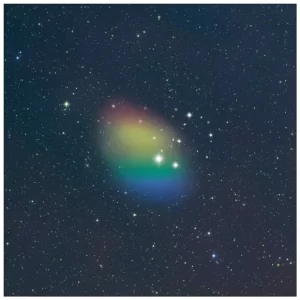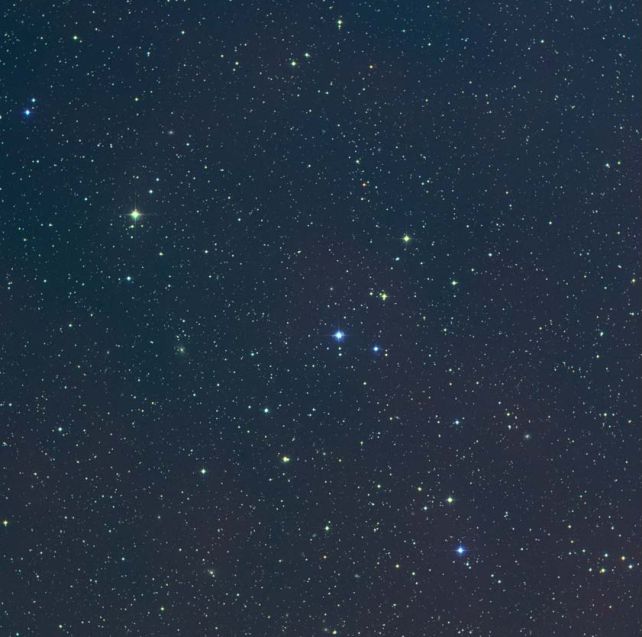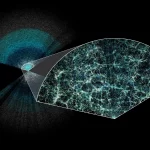Key Takeaways:
- A typo led a radio telescope to an unexpected area of the sky, where it uncovered a massive hydrogen gas cloud resembling a primordial galaxy.
- This discovery may offer astronomers a glimpse into the early stages of galactic evolution.
- The detected galaxy, J0613+52, appears to be composed mainly of gas and lacks visible stars, indicating it is in a primitive state.
- Primordial galaxies like J0613+52 are believed to be rare, suggesting unique conditions for their formation.
- Further observations with optical telescopes are planned to confirm the primordial nature of J0613+52, potentially revealing more about its intriguing properties.

Researchers may have detected a dark, ancient galaxy—a vast, undisturbed accumulation of cold hydrogen gas that has not yet begun star formation—in the present-day cosmos.
If confirmed, this discovery could provide astronomers with insight into the early phases of galactic development. Karen O’Neil, the lead researcher and an astronomer at the Green Bank Observatory in West Virginia, expressed her anticipation: “I have been involved in this field for many years, and the search for such an entity has been long-awaited.”
The initial indication of an anomaly arose from a discrepancy in observations made by the Green Bank Telescope (GBT) and the Nançay Radio Telescope during a joint survey of faint galaxies. Although both telescopes were directed towards the same area of the sky, the 100-meter-wide GBT detected something that the Nançay Radio Telescope did not.
“Upon closer examination and extensive scrutiny, we realized that the coordinates in the GBT catalog had been entered incorrectly,” explained O’Neil during a press conference at the American Astronomical Society’s winter meeting in New Orleans on January 8. “Regrettably, such errors occasionally occur among astronomers, especially during late-night observations.”

The radio observations from GBT suggested the presence of a cloud of gas resembling the size of a spiral galaxy, containing several billion solar masses, rotating at a speed comparable to that of the Milky Way. However, no corresponding observations were made in visible light. “We revisited the data and asked ourselves, ‘What did we actually detect?'” recounted O’Neil. “Subsequently, we realized that there was nothing visible. Therefore, we speculate that what we have discovered could potentially be a primordial galaxy—a galaxy composed mainly of gas, too diffuse for gravitational forces to induce star formation.” This galaxy, named J0613+52 and located approximately 270 million light-years away, exists in isolation from neighboring galaxies, which could otherwise disrupt its formation process.
O’Neil believes that primordial galaxies are likely rare, as previous surveys conducted by the now-defunct Arecibo Observatory in Puerto Rico would have identified them if they were common.
“I remain cautious because when you finally encounter something you have been eagerly awaiting, there is always a lingering doubt—’Is this truly what we have been seeking?'” remarked O’Neil. “Nevertheless, this discovery represents the most promising candidate thus far.” To validate the primordial nature of the galaxy, the research team intends to use a large optical telescope for extended observations—ironically, hoping to observe nothing at all. “Even if we manage to detect it, the surface brightness will be extremely low, yet incredibly thrilling,” stated O’Neil. “However, if we fail to detect it, that outcome would be equally intriguing.”


